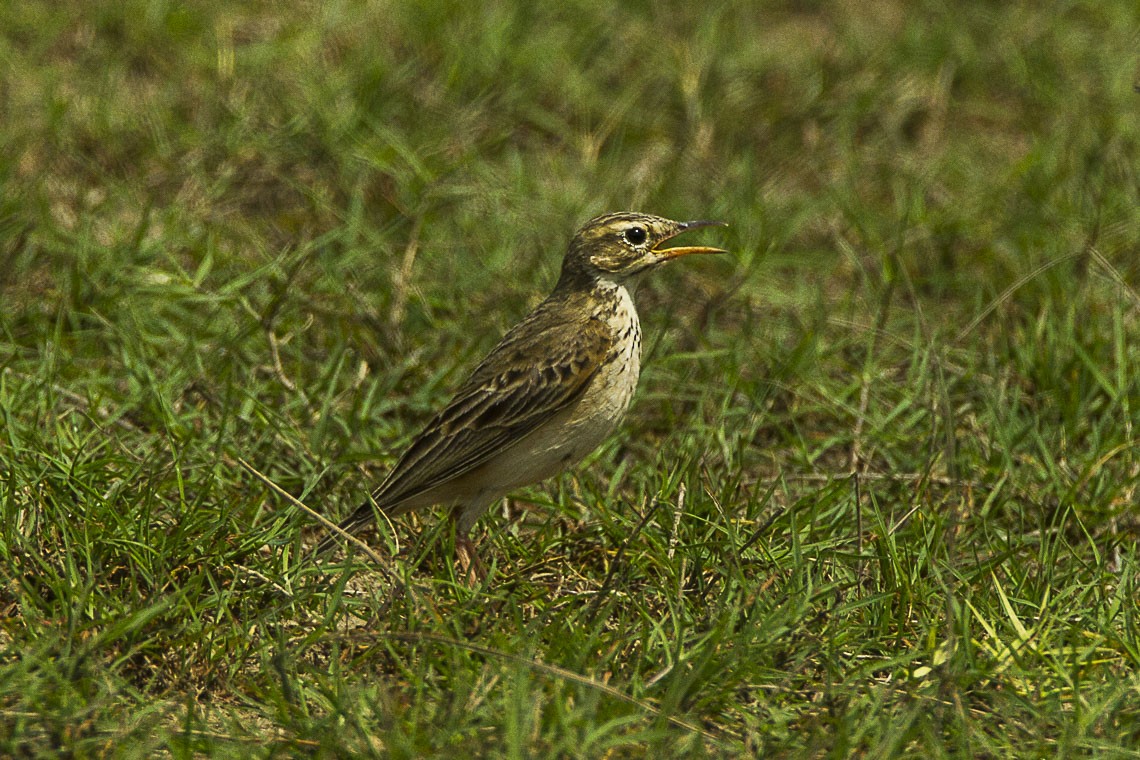Paddyfield Pipit
A species of Pipits Scientific name : Anthus rufulus Genus : Pipits
Paddyfield Pipit, A species of Pipits
Botanical name: Anthus rufulus
Genus: Pipits
Content
Description General Info
 Photo By Francesco Veronesi , used under CC-BY-SA-2.0 /Cropped and compressed from original
Photo By Francesco Veronesi , used under CC-BY-SA-2.0 /Cropped and compressed from original Description
This is a large pipit at 15 cm, but is otherwise an undistinguished looking bird, mainly streaked grey-brown above and pale below with breast streaking. It is long legged with a long tail and a long dark bill. Sexes are similar. Summer and winter plumages are similar. Young birds are more richly coloured below than adults and have the pale edges to the feathers of the upper parts more conspicuous with more prominent spotting on the breast. The population waitei from north-western India and Pakistan is pale while the population malayensis from the Western Ghats is larger, darker and more heavily streaked with the nominate rufulus intermediate. In winter some care must be taken to distinguish this from other pipits that winter in the area, such as Richard's pipit, Anthus richardi and Blyth's pipit, Anthus godlewskii. The paddyfield pipit is smaller and dumpier, has a shorter looking tail and has weaker fluttering flight. The usually uttered characteristic chip-chip-chip call is quite different from usual calls of Richard's pipit (an explosive shreep) and Blyth's pipit (a nasal pschreen). The tawny pipit has less streaking on the mantle and has a black loreal stripe and a longer tail. The Western Ghats population can appear very similar to the Nilgiri pipit. 
Size
16 cm
Colors
Bronze
Gray
White
Nest Placement
Ground
Feeding Habits
Paddyfield Pipit primarily forages on the ground for small insects, including beetles, snails, and worms. It will also catch flying insects such as mosquitoes and termites mid-air.
Habitat
The paddyfield Pipit primarily inhabits open country landscapes characterized by short grasslands and cultivated fields that provide clear bare ground. Its adaptable nature allows it to thrive in a variety of terrains, including paddy fields, stubble fields, and even man-made environments like airfields and roadsides. Edges of wetlands and savanna woodlands also form part of its habitat range. Geographically, it is found across regions with elevations ranging from sea level to 2400 meters, including areas with temperate to tropical climates.
Dite type
Insectivorous
General Info
Feeding Habits
Bird food type
Behavior
A widespread species found in open habitats, especially short grassland and cultivation with open bare ground. It runs rapidly on the ground, and when flushed, does not fly far. The paddyfield pipit breeds throughout the year but mainly in the dry season. Birds may have two or more broods in a year. During the breeding season, it sings by repeating a note during its descent from a short fluttery flight, a few feet above the ground. It builds its nest on the ground under a slight prominence, a tuft of grass, or at the edge of a bush. The nests are woven out of grass and leaves and are normally cup shaped. Exposed nests are sometimes domed or semi-domed, the long grass at the back and sides extending over the top. Nests are lined with finer grass or roots and sometimes with a little dry moss, bracken or other material at the base of the nest. The usual clutch is three or four eggs with greenish ground colour and numerous small brown specks at the larger. When disturbed near the nest, the birds flutter nearby with weak tsip-tsip-tsip calls. Parent birds may also feign injury to distract predators. Mites are known to cause scaly leg lesions. It feeds principally on small insects but consumes larger beetles, tiny snails, worms etc. while walking on the ground, and may pursue insects like mosquitoes or termites in the air. A species of Haemoproteus, H. anthi, has been described from this species. 
Species Status
Not globally threatened.
Scientific Classification
Phylum
Chordates Class
Birds Order
Perching birds Family
Wagtails Genus
Pipits Species
Paddyfield Pipit